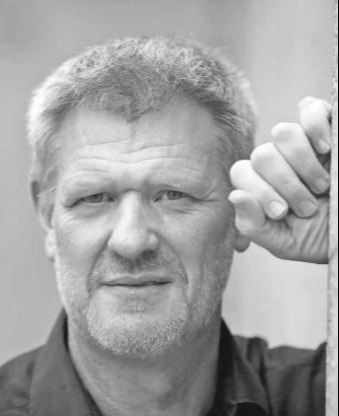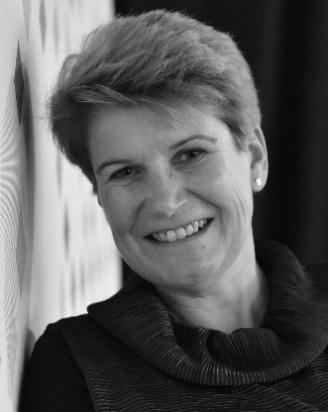Música, llengua parlada i cervell: aportacions a la neuroeducació
DOI:
https://doi.org/10.1344/LSC-2022.20.1Paraules clau:
música, llenguatge parlat, cervell, xarxes neuronals, evolució, neuroeducacióResum
El llenguatge parlat i la música constitueixen dos sistemes de comunicació complexos, que presenten una gran diversitat cultural però que, malgrat això, es construeixen de manera relativament similar. Ambdós sorgeixen de la combinació d’elements més simples: fonemes, paraules i frases que es van encadenant en el llenguatge, i sons, melodies, harmonies, ritmes i timbres en la música; es regeixen per una sèrie de normes, també culturalment diverses però que en tots els casos serveixen per facilitar la comprensió del missatge que transmeten; permeten comunicar estats interns, inclosos els emocionals; reflecteixen aspectes de la realitat i al mateix temps permeten alterar mentalment els models de realitat; en la seva gènesi dinàmica hi ha implicats processos creatius, i tant la seva producció com comprensió se sustenten en les capacitats funcionals del cervell. Tenen alguna cosa en comú la música i el llenguatge parlat pel que fa a la seva gènesi, comprensió i interpretació, dins el cervell? O, dit d’una altra manera, comparteixen bases neuronals? En cas afirmatiu, els podem utilitzar en contextos educatius per potenciar-los ambdós de manera sinèrgica? En aquest article es fa una revisió de l’estat actual sobre aquest tema i es discuteix quina és la base biològica, tant evolutiva com neuronal, de la música i el llenguatge parlat; es veurà com interactuen sinèrgicament dins el cervell, i es proposarà des de la neuroeducació de quina manera es poden utilitzar en contextos educatius per potenciar-los mútuament, amb els avantatges formatius, cognitius i de construcció de la identitat que això suposa.
Referències
Ardila, Alfredo; Bernal, Byron; Rosselli, Monica (2016). «How Localized are Language Brain Areas? A Review of Brodmann Areas Involvement in Oral Language». Arch Clin Neuropsychol, 31(1), 112-22.
Arias-Carrión, Óscar; Pöppel, Ernst (2007). «Dopamine, learning, and reward-seeking behavior». Acta Neurobiologiae Experimentalis, 67(4), 481-488.
Barney, Anna; Martelli, Sandra; Serrurier, Antoine; Steele, James (2012). «Articulatory capacity of Neanderthals, a very recent and human-like fossil hominin». Philos Trans R Soc Lond B Biol Sci, 367(1585), 88-102.
Bennett, Maxwell; Dennett, Daniel; Hacker, Peter; Searle, John (2007). Neuroscience and philosophy: Brain, mind, and language. Columbia University Press.
Besson, Mireille; Schön, Daniele; Moreno, Sylvain; Santos, Andréia; Magne, Cyrille (2007). «Influence of musical expertise and musical training on pitch processing in music and language». Restor Neurol Neurosci, 25(3-4), 399-410.
Brown, Steven (2017). «A Joint Prosodic Origin of Language and Music». Front Psychol, 8, 1894.
Bueno, David (2019). Neurociencia aplicada a la educación. Madrid: Editorial Síntesis.
Bueno, David (2021). «La neurociencia como fundamento de la educación emocional». RIEEB 1, 47-61
Bueno, David; Forés, Anna (2021). La pràctica educativa amb mirada neurocientífica. Barcelona: Editorial Horsori.
Bueno, David; Forés, Anna; Ruiz, Marcel (2023). Els beneficis de la lectura en veu alta. Una descoberta (fascinant) des de la neuroeducació. Barcelona: Editorial La Galera (en premsa).
Castaño, Julio (2003). «Bases neurobiológicas del lenguaje y sus alteraciones». Rev Neurol, 36(8), 781-785.
Dolan, Raymond Joseph (2002). «Emotion, cognition, and behavior». Science, 298(5596), 1191-1194.
Dubinsky, Janet M.; Guzey, S. Selcen; Schwartz, Marc S.; Roehrig, Gillian; MacNabb, Carrie; Schmied, Astrid; Hinesley, Vicki; Hoelscher, Mary; Michlin, Michael; Schmitt, Lee; Ellingson, Charlene; Chang, Zhengsi; Cooper, Janice L. (2019). «Contributions of Neuroscience Knowledge to Teachers and Their Practice». The Neuroscientist, 25(5), 394-407.
Chen, Qun-Lin; Xu, Ting; Yang, Wen-Jing; Li, Ya-Dan; Sun, Jiang-Zhou; Wang, Kang-Cheng; Beaty, Roger E.; Zhang, Qing-Lin; Zuo, Xi-Nian; Qiu, Jiang (2015). «Individual differences in verbal creative thinking are reflected in the precuneus». Neuropsychologia, 75, 441-449.
Chobert, Julie; Besson, Mireille (2013). «Musical expertise and second language learning». Brain Sci, 3(2), 923-940.
Costa, Albert (2017). El cerebro bilingüe: la neurociencia del lenguaje. Madrid: Debate.
Cowley, Stephen J.; Kuhle, Anneliese (2020). «The rise of languaging». Biosystems, 198, 104264.
Custodio, Nilton; Cano-Campos, María (2017). «Efectos de la música sobre las funciones cognitivas». Revista de Neuro-Psiquiatría, 80(1), 60-69.
D’Anastasio, Ruggero; Wroe, Stephen; Tuniz, Claudio; Mancini, Lucia; Cesana, Deneb T.; Dreossi, Diego; Ravichandiran, Mayoorendra; Attard, Marie; Parr, William C. H.; Agur, Anne; Capasso, Luigi (2013). «Micro-biomechanics of the Kebara 2 hyoid and its implications for speech in Neanderthals». PLoS One, 8(12), e82261.
Darwin, Charles (1871). The Descent of Man, and Selection in Relation to Sex. (L’origen de l’home i sobre la selecció en relació amb el sexe. Barcelona: Edicions Científiques Catalanes, 1984).
Dittinger, Eva; Barbaroux, Mylène; D’Imperio, Mariapaola; Jäncke, Lutz; Elmer, Stefan; Besson, Mireille (2016). «Professional music training and novel word learning: From faster semantic encoding to longer-lasting word representations». J Cognitive Neurosci, 28, 1584-1602.
Fitzroy, Ahren B.; Sanders, Lisa D. (2013). «Musical expertise modulates early processing of syntactic violations in Language». Front Psychol, 3, 603.
Friederici, Angela D.; Chomsky, Noam; Berwick, Robert C.; Moro, Andrea; Bolhuis, Johan J. (2017). «Language, mind and brain». Nat Hum Behav, 1(10), 713-722.
Fröhlich, Marlen; Wittig, Roman M.; Pika, Simone (2019). «The ontogeny of intentional communication in chimpanzees in the wild». Dev Sci, 22(1), e12716.
Janik, Vincent M. (2014). «Cetacean vocal learning and communication». Curr Opin Neurobiol, 28, 60-65.
Jentschke, Sebastian; Koelsch, Stefan (2009). «Musical training modulates the development of syntax processing in children». Neuroimage, 47, 735-744.
Higham, Thomas; Basell, Laura; Jacobi, Roger; Wood, Rachel; Ramsey, Christopher Bronk; Conard, Nicholas J. (2012). «Τesting models for the beginnings of the Aurignacian and the advent of figurative art and music: the radiocarbon chronology of Geißenklösterle». J Hum Evol, 62(6), 664-76.
Kolb, Bryan; Gibb, Robbin (2011). «Brain plasticity and behaviour in the developing brain». J Can Acad Child Adol Psychi, 20(4), 265.
Kraus, Nina; White-Schwoch, Travis (2017). «Neurobiology of Everyday Communication: What Have We Learned From Music?». Neuroscientist, 23(3), 287-298.
Kuhl, Patricia K. (2012). «Language learning and the developing brain: Cross-cultural studies unravel the effects of biology and culture». The Journal of the Acoustical Society of America, 131(4), 3207-3207.
Lorenzo, Oswaldo; Herrera, Lucía; Hernández-Candelas, Marta; Badea, Mihaela (2014). «Influence of music training on language development, a longitudinal study». Procedia-Social Behav Sci, 128, 527-530.
Luuk, Erkki; Luuk, Hendrik (2011). «The redundancy of recursion and infinity for natural language». Cogn Process, 12(1), 1-11.
Mithen, Steven (2007). Los neandertales cantaban rap. Barcelona: Drakontos.
Mizener, Charlotte P. (2008). «Our singing children: Developing singing accuracy». General Music Today, 21, 18-24.
Moreno, Sylvain; Besson, Mireille (2006). «Musical training and language-related brain electrical activity in children». Psychophysiology, 43, 287-291.
Patel, Aniruddh; Iversen, John R. (2007). «The linguistic benefits of musical abilities». Trends Cogn Sci, 11, 369-372.
Pepperberg, Irene M. (2021). «Nonhuman and Nonhuman-Human Communication: Some Issues and Questions». Frontiers in psychology, 12, 647841.
Redolar, Diego (ed.) (2023). Neurociencia Cognitiva. Madrid: Editorial Médica Panamericana (en premsa).
Repp, Bruno H. (1984). «Categorical perception: issues, methods, findings». Lass, Norman J. (ed.). Speech and Language: Advances in Basic Research and Practices, vol. 10. New York: Academic Press.
Ripollés, Pablo; Marco-Pallarés, Josep; Hielscher, Ulrike; Mestres-Missé, Anna; Tempelmann, Claus; Heinze, Hans Jochen; Rodríguez-Fornells, Antoni; Noesselt, Toemme (2014). «The Role of Reward in Word Learning and Its Implications for Language Acquisition». Curr. Biol., 24, 2606-2611.
Sakai, Kuniyoshi L.; Oshiba, Yoshiaki; Horisawa, Reiya; Miyamae, Takeaki; Hayano, Ryugo (2021). «Music-Experience-Related and Musical-Error-Dependent Activations in the Brain». Cerebral Cortex, 2021, 1-14.
Sharot, Tali; Guitart-Masip, Marc; Korn, Christoph W.; Chowdhury, Rumana; Dolan, Raymond J. (2012). «How dopamine enhances an optimism bias in humans». Curr Biol., 22(16), 1477-1481.
Strait, Dana L.; Hornickel, Jane; Kraus, Nina (2011). «Subcortical processing of speech regularities underlies reading and music aptitude in children». Behav Brain Funct, 7, 44.
Swain, Merrill (2013). «The inseparability of cognition and emotion in second language learning». Language Teaching, 46(2), 195-207.
Swingley, Daniel (2008). «The roots of the early vocabulary in infants’ learning from speech». Curr Dir Psychol Sci, 17(5), 308-311.
Tierney, Adam; Kraus, Nina (2013). «Music training for the development of reading skills». Prog Brain Res, 207, 209-241.
Yu, Mengxia; Xu, Miao; Li, Xueting; Chen, Zhencai; Song, Yiying; Liu, Jia (2017). «The shared neural basis of music and language». Neuroscience, 357, 208-219.
Wiggins, Geraint A. (2020). «Creativity, information and consciousness: The information dynamics of thinking». Physics of life reviews, 34-35, 1-39.
Descàrregues
Publicades
Número
Secció
Llicència
Drets d'autor (c) 2022 David Bueno i Torrens

Aquesta obra està sota una llicència internacional Creative Commons Reconeixement-NoComercial-SenseObraDerivada 4.0.
L'autor conserva els drets d'autoria i atorga a la revista el dret de primera publicació de l'obra.
Els articles seran publicats sota una llicència de Creative Commons 




